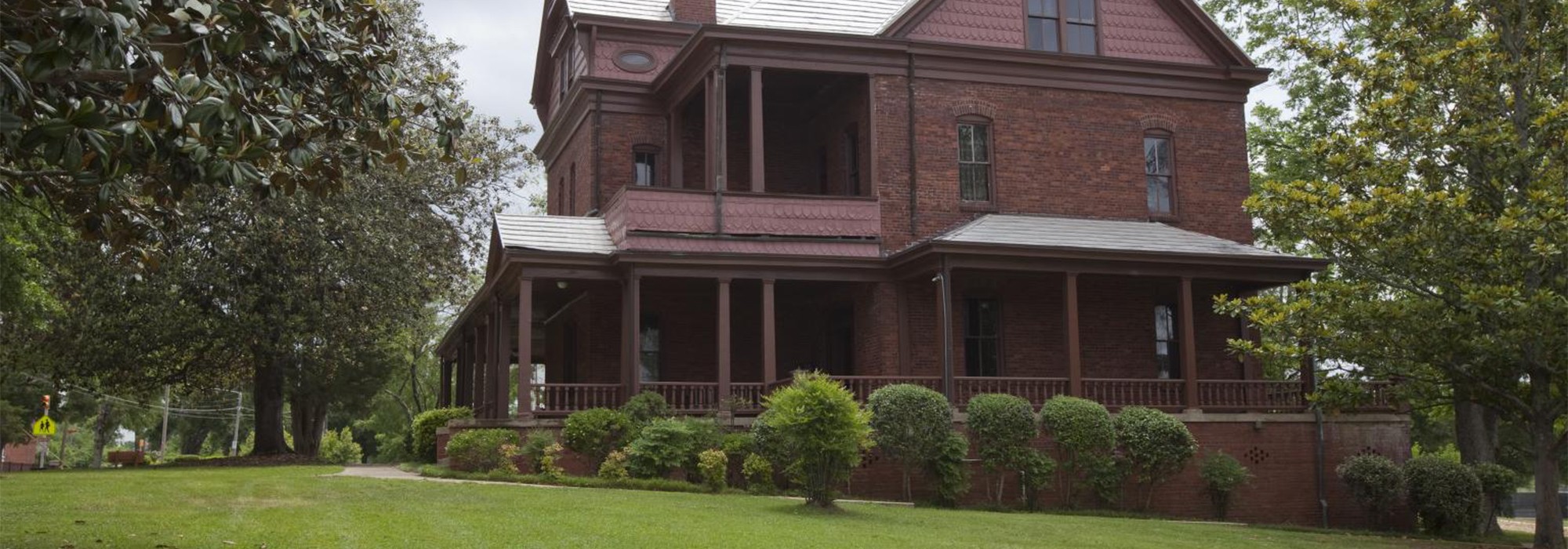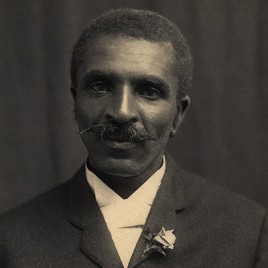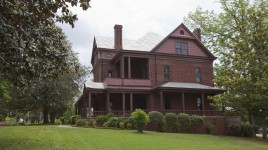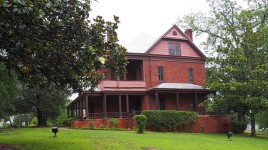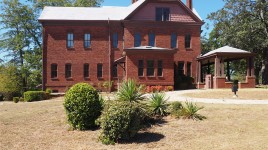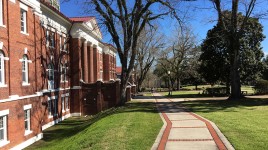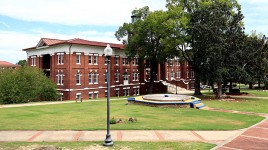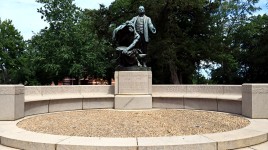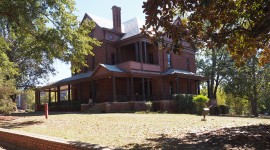Pioneer Information
Born on a farm in Diamond Grove (now Diamond), Missouri, Carver began life in enslavement. Seeking better opportunities further west, he attended high school in Minneapolis, Kansas; later admitted to Highland College in 1885, his admission with withdrawn when the school realized his race. After a three-year stint on a homestead in Ness County, Kansas, Carver enrolled in Simpson College in 1890 to study piano and art. The following year he transferred to the Iowa Agricultural College and Model Farm, now Iowa State University, graduating in 1894 with a B.S. in agriculture and joining their faculty the same year. A master’s degree followed at the same institution in 1896. Later that year, he was recruited by Booker T. Washington to join the faculty at the Tuskegee Normal School and Industrial Institute (now Tuskegee University) and was appointed agriculture director in 1896. There, he developed and taught the school’s plant science curriculum, leading an Agricultural Experiment Station authorized by the Alabama Legislature in the following year.
Integral to his work on the production of peanuts and other crops, Carver advocated for a shift away from the soil-depleting practice of cotton production to more regenerative agriculture practices. Carver also contributed to the design of The Oaks, Booker T. Washington’s estate at Tuskegee, where his horticultural knowledge informed the selection of trees, shrubs, and herbaceous plants best suited to the region. Working with the landscape architect David Williston, another member of the faculty, their collaboration extended to plantings on the Institute’s campus. Dr. Carver remained on the faculty at Tuskegee for 47 years, earning a museum in his honor there in his lifetime. He died in the town of Tuskegee at the age of 79. A monument marks the place of his burial on the campus.



